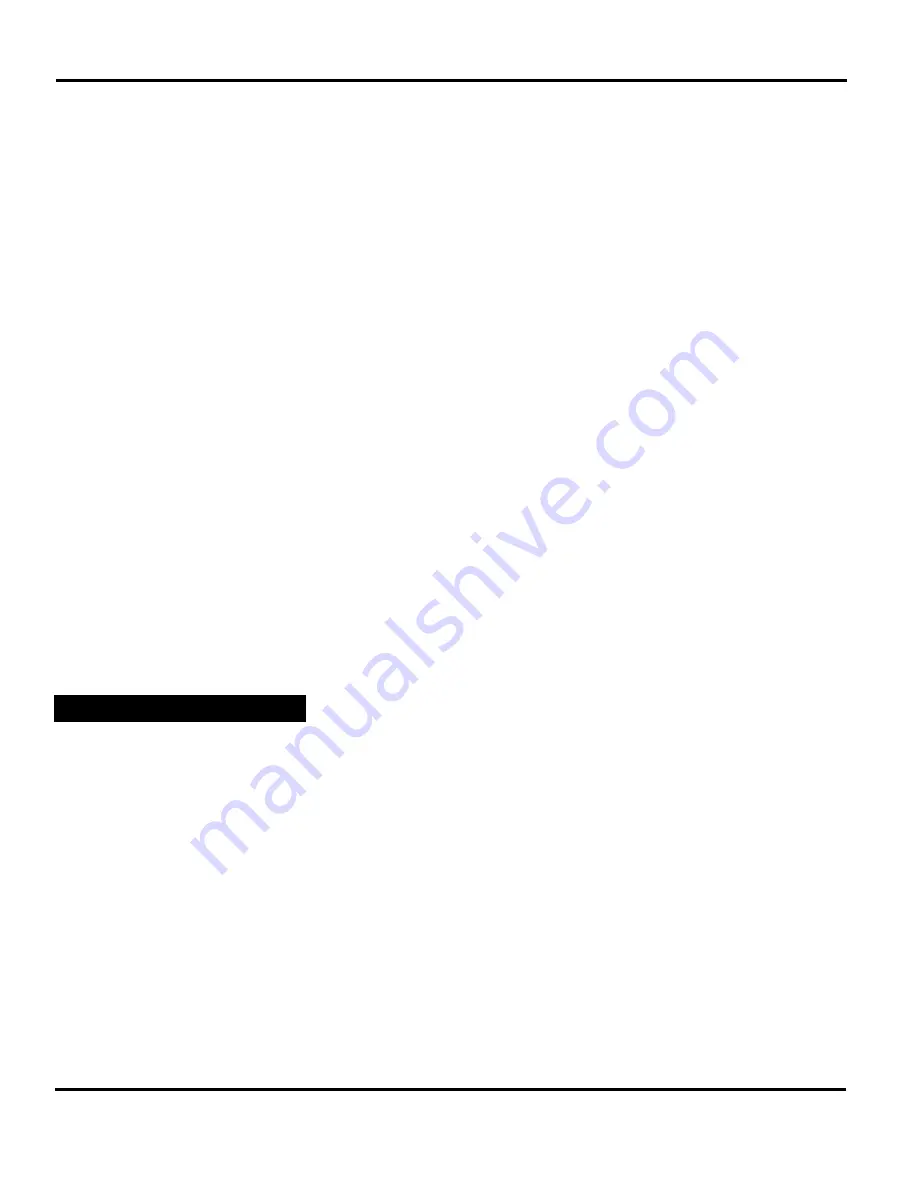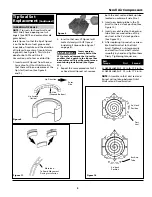
2
Scroll Air Compressors Tankmount/Basemount
Installation
RECEIVING THE UNIT
Immediately upon receipt of the scroll
compressor, the unit should be inspect-
ed for any damage which may have
occurred in shipment. Any shipping
damage must be immediately filed with
the freight carrier.
The compressor nameplate should be
checked to see if the unit is the correct
model and voltage as ordered.
APPLICATION
When the scroll compressor is to be
used in applications other than the
compressing of atmospheric air, please
contact a Powerex representative for
engineering and warranty information
at 1-888-769-7979.
INSTALLATION SITE
1. The scroll compressor must be locat-
ed in a clean, well lit and well venti-
lated area.
2. The area should be free of excessive
dust, toxic or flammable gases, mois-
ture, water and direct sunlight.
3. Never install the compressor where
the ambient temperature is higher
than 104
o
F or where humidity is high.
4. Clearance must allow for safe, effec-
tive inspection and maintenance.
5. If necessary, use metal shims or leveling
pads to level the compressor. Never use
wood to shim the compressor.
VENTILATION
1. If the scroll compressor is located in a
totally enclosed room, an exhaust fan
with access to outside air must be
installed.
2. Never restrict the cooling fan
exhaust air.
3. Never locate the compressor where
hot exhaust air from other heat gen-
erating units may be pulled into the
unit.
WIRING
Refer to the general product manual.
All electrical hook-ups must be per-
formed by a qualified electrician.
Installations must be in accordance
with local and national electrical codes.
Use solderless terminals to connect the
electric power source.
PIPING
Refer to the general product manual.
1. Make sure the piping is lined up
without being strained or twisted
when assembling the piping for the
scroll compressor.
2. Appropriate expansion loops or
bends should be installed at the com-
pressor to avoid stresses caused by
changes in hot and cold conditions.
3. Piping supports should be anchored
separately from the compressor to
reduce noise and vibration.
4. Never use any piping smaller than
the compressor connection.
5. Use flexible hose to connect the out-
let of the compressor to the piping so
that the vibration of the compressor
does not transfer to the piping.
SAFETY VALVES
Tank mounted compressors are shipped
from the factory with safety valves
installed in the tank. The flow capacity
of the safety valve is equal to or greater
than the capacity of the compressor.
1. The pressure setting of the safety
valve must be no higher than the
maximum working pressure of the
tank.
2. Safety valves should be placed ahead
of any possible blockage point in the
system, i.e. shutoff valve.
3. Avoid connecting the safety valve
with any tubing or piping.
4. Manually operate the safety valve
every six months to avoid sticking or
freezing.
Operation
BEFORE START UP
1. Make sure all safety warnings, labels
and instructions have been read and
understood before continuing.
2. Remove any shipping materials,
brackets, etc.
3. Confirm that the electric power
source and ground have been firmly
connected.
4. Be sure all pressure connections are
tight.
5. Check to be certain all safety relief
valves, etc., are correctly installed.
6. Check that all fuses, circuit breakers,
etc., are the proper size.
7. Make sure the inlet filter is properly
installed.
8. Confirm that the drain valve is closed.
9. Visually check the rotation of the
compressor pump. If the rotation is
incorrect, have a qualified electrician
correct the motor wiring.
START-UP AND OPERATION
1. Follow all the procedures under
“Before start-up” before attempting
operation of the compressor.
2. Switch the electric source breaker on.
3. Open the tank discharge valve com-
pletely.
4. Check that the compressor operates
without excessive vibration, unusual
noises or leaks.
5. Close the discharge valve completely.
6. If the pressure does not rise on a
three phase unit, turn the unit off.
Have a qualified electrician switch
the breaker OFF and exchange the L1
and L2 connections (two out of three
phases of electric source) inside the
magnetic starter enclosure.
7. Check the discharge pressure. Also
make sure the air pressure rises to the
designated pressure setting by check-
ing the discharge pressure gauge.
8. Check the operation of the pressure
switch by opening the tank outlet
valve and confirming the compressor
starts as pressure drops.
Minimum Clearances
Above
24”
Drive belt side
12”
Other sides
20”



































